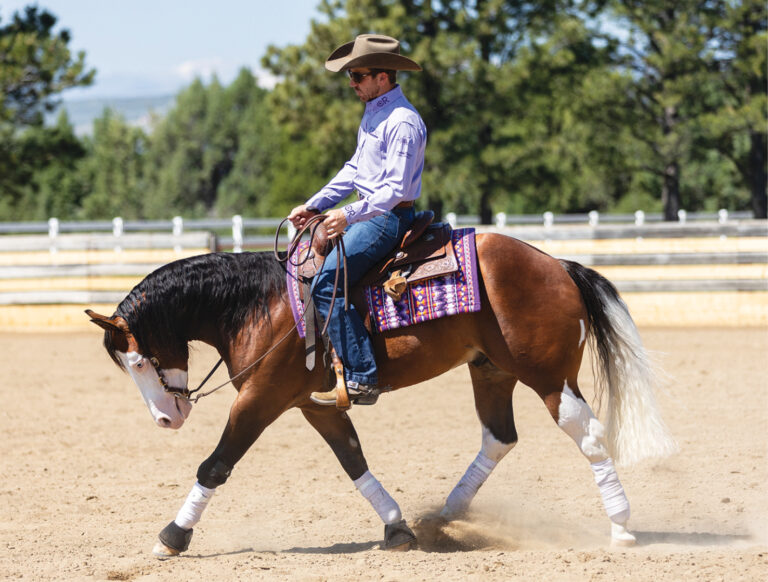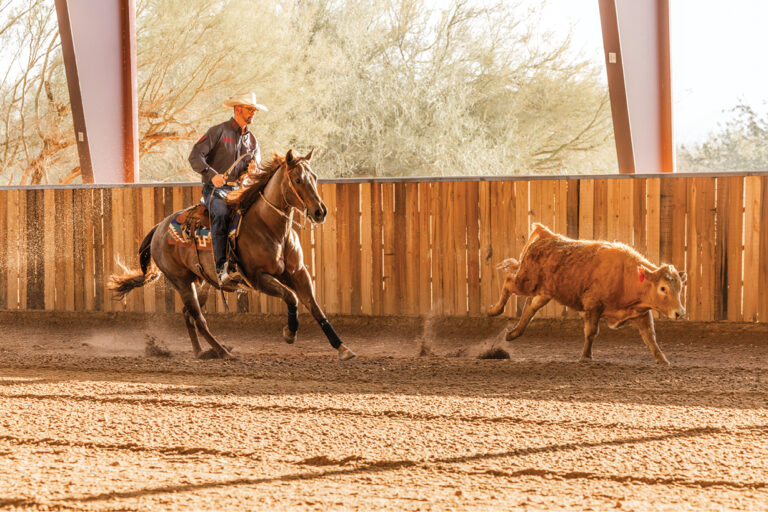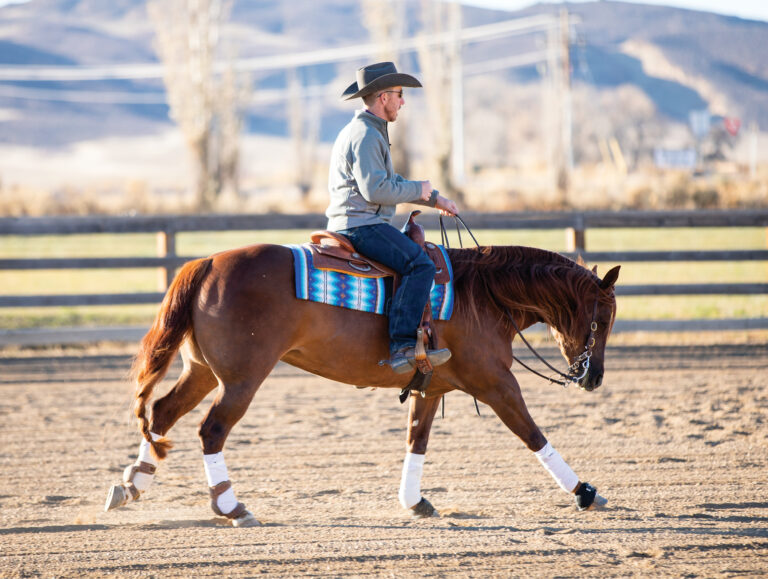Here I’ll break down the steps for teaching your horse how to move off your leg for a successful spin. While this particular set of photos shows me preparing for a spin, you can use this concept to help get your horse off your leg to prepare for lope departures or flying lead changes.
[READ: Fix Lead-Change Anticipation]
It’s not natural for a horse to move off of leg pressure, so it’s important that when you’re working on this with your horse that you reward him with a release when he does move off your leg. When you’re first introducing this exercise to your horse’s routine, start with just one step before you give a release and let him relax. The softer and more relaxed he becomes, the more you can ask of him.
One
I begin by asking my horse to sidepass to the right. I’m using two hands to help support my horse, and once I feel him step to the right and move off of the pressure from my left leg, I’m going to release to let him know that’s the correct response. I’ll work this direction until I feel my horse soften up before asking him to move to the left. If your horse is new to this exercise, stick with one direction to avoid confusion. Once you’re happy with your progress to the right, you can start working on going to the left.
Two
As my horse sidepasses to the right he begins to drop his shoulder. To counter that, I lift my right rein up to block the right shoulder from dropping and allow his hip to catch up. I’m using my left foot to encourage my horse to move with forward motion to the right, meaning his left front foot crosses over his right front foot, while my right foot stays relaxed and open.
[READ: Sidepass Around a Corner]

Three
After I can successfully move my horse off my leg without his shoulder dropping in, I up the degree of difficulty by setting him up to go into a spin. I’m still asking him to move forward and off of my leg with his shoulder standing up, but have tilted his chin to the right, so he can start looking into the turn.
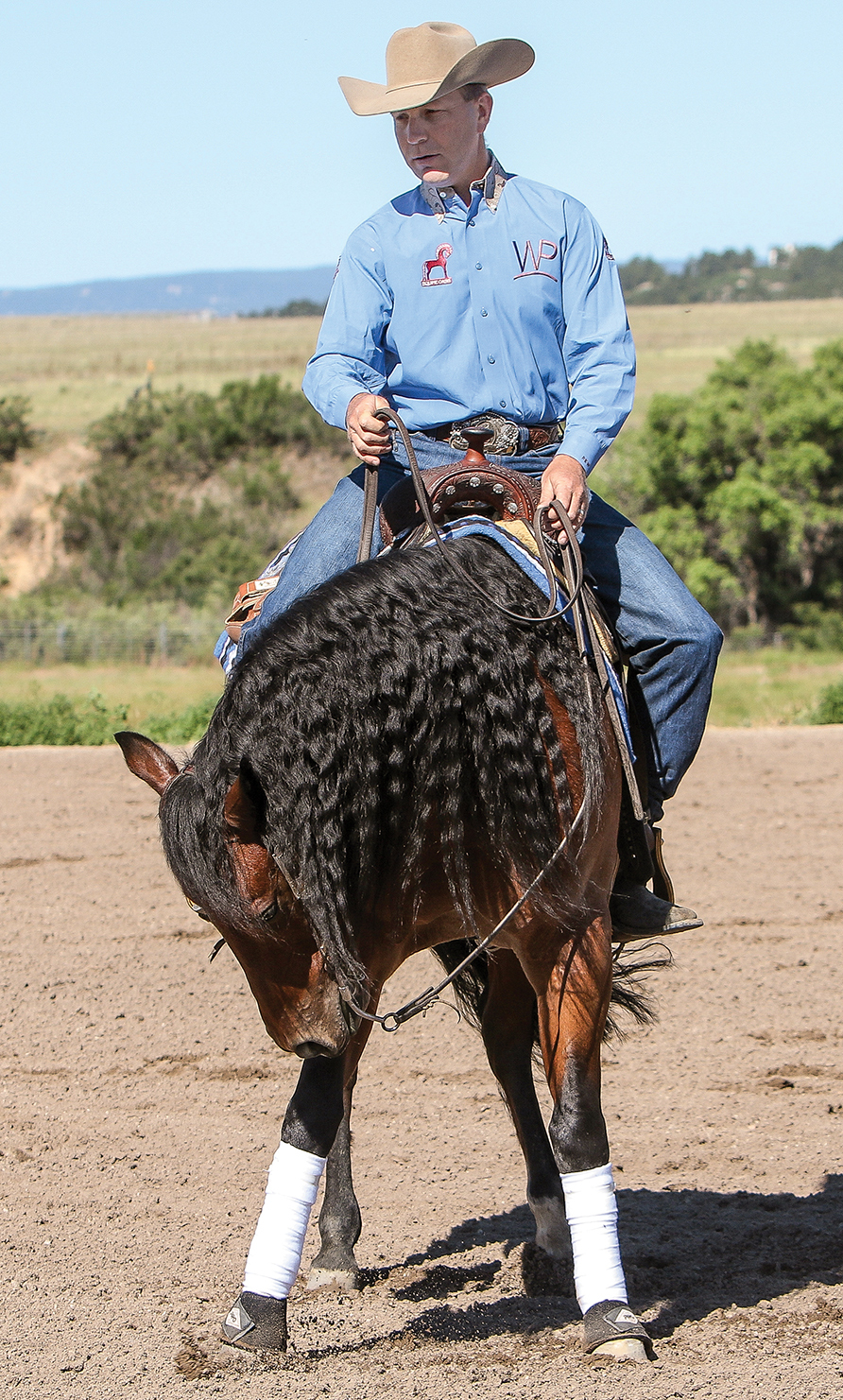
Four
Next I add more forward motion to initiate the spin by walking a small circle. I continue to have my horse move off of my left leg, and I still have his chin slightly tilted to the right. As I do this I work on moving my horse’s weight to his right-hind leg, so we can start a spin without any hesitation or sucking back. We must maintain forward motion.
[READ: Keep Your Horse Moving]
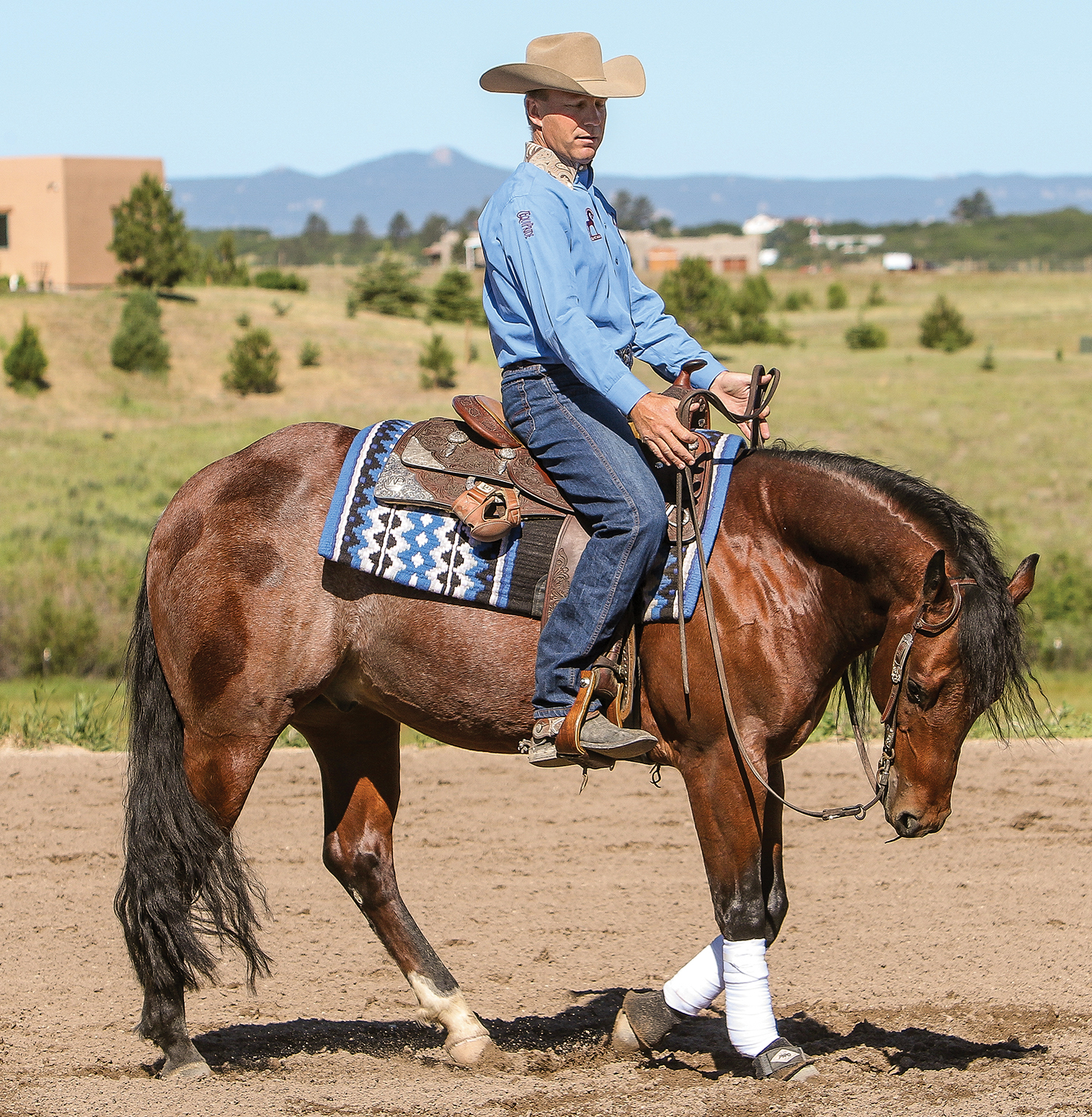
Five
It’s important that when you’re riding two-handed you have the goal of riding one-handed in mind. So once my horse can successfully move off my leg with two hands, I go back to one hand. Here I’ve asked my horse to spin to his right. As we start turning he doesn’t have as much weight on the right hind as I would like, and he’s starting to drop his shoulder.
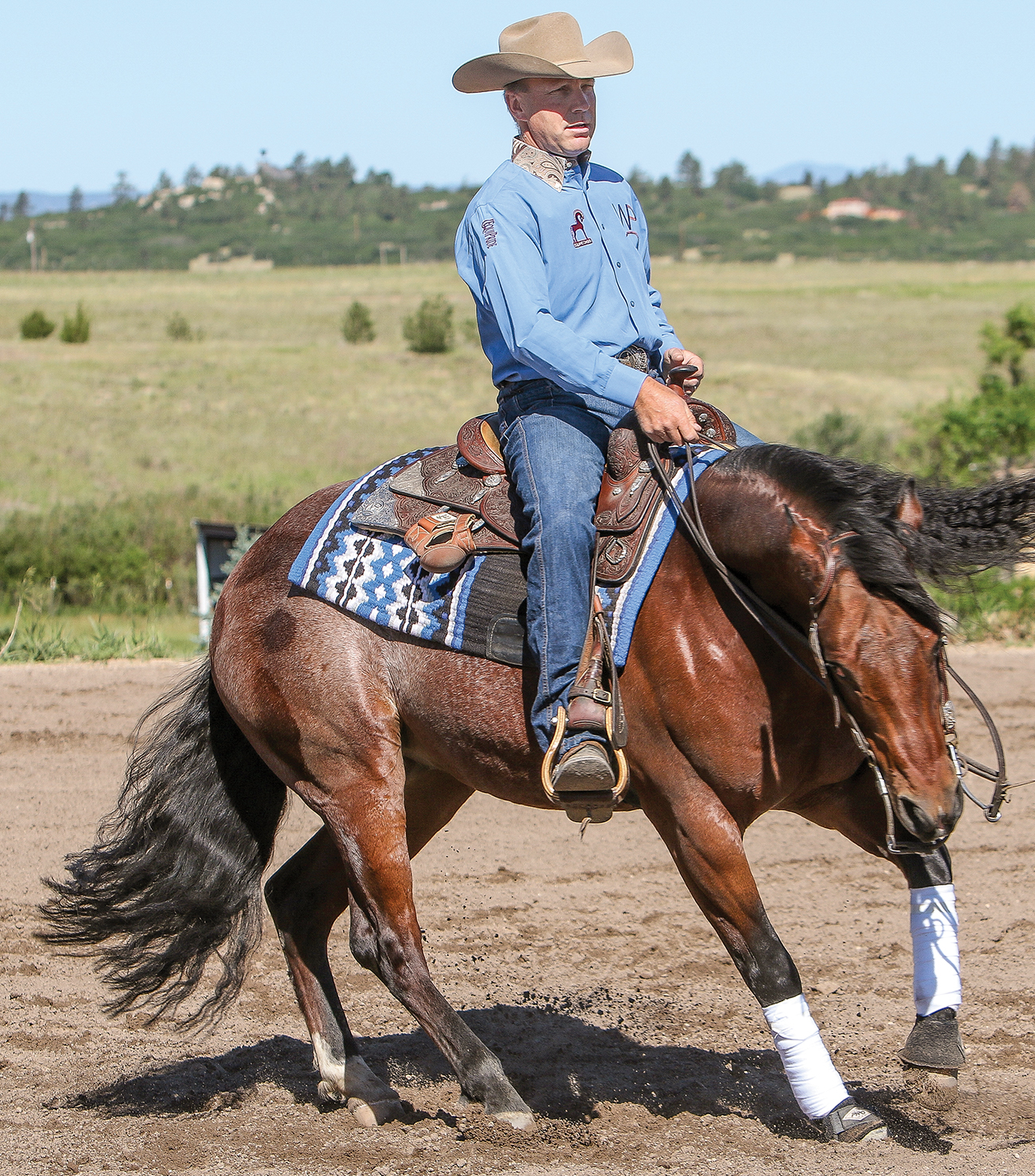
Six
To fix the problem in my turnaround, I stop my horse and go back to moving him off my leg and ask him to stand up in his right shoulder. You’ll notice my hand is lifted up and to my left to encourage my horse’s nose to come back to the inside and help block his right shoulder from falling in. I’m also using my left leg to push his body and hip back over to the right; still leaving my right leg relaxed so he has somewhere to go.
[READ: Trevor Dare – Stop Your Spin Accurately]
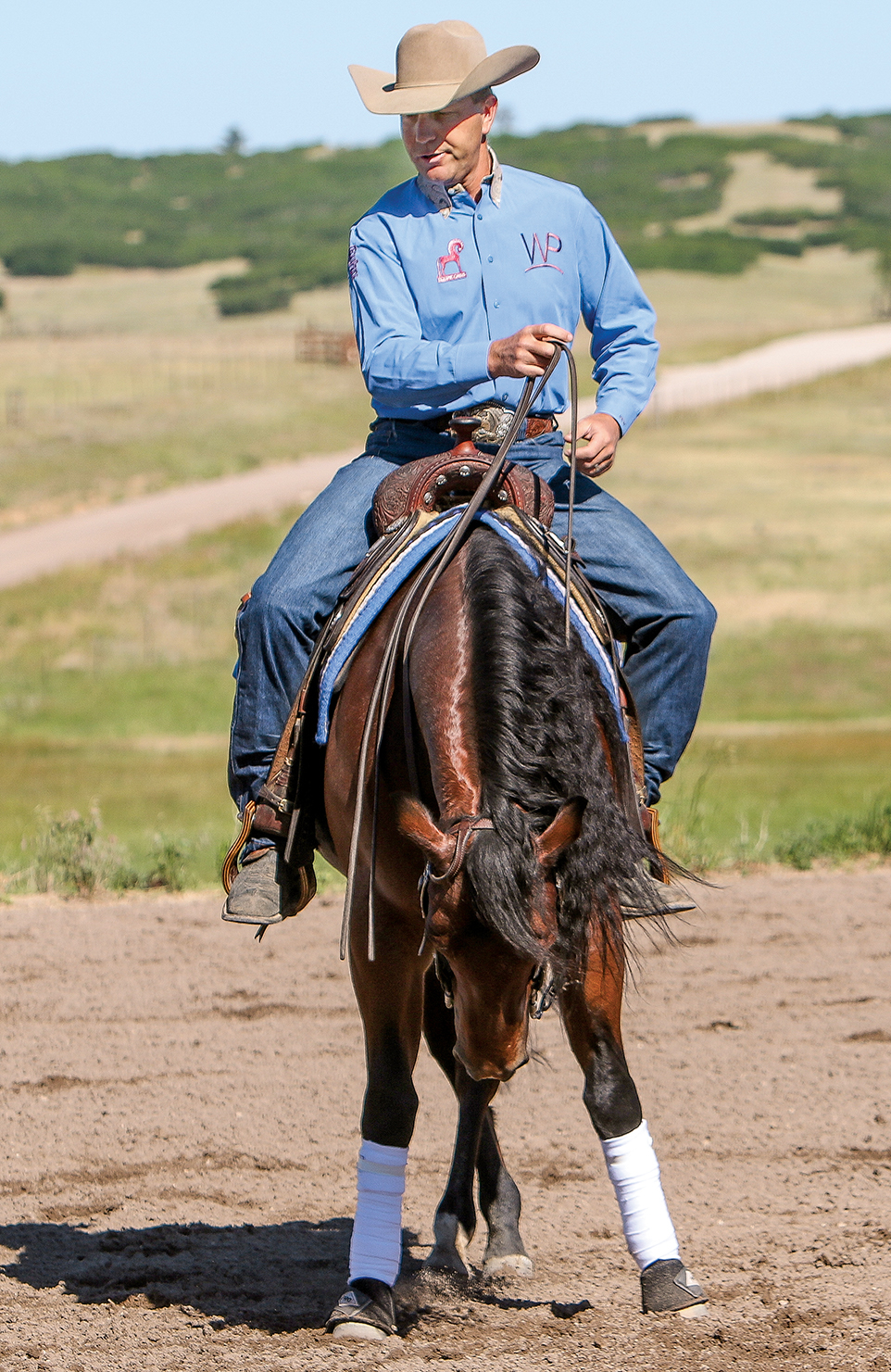
Seven
Once my horse listens to my hand and feet cues, and goes back to lifting his shoulder, moving forward and off my leg, and has his chin tilted to the right looking into the turn, I bring my hand back to the center of my body and prepare to set him up to spin to the right again.


